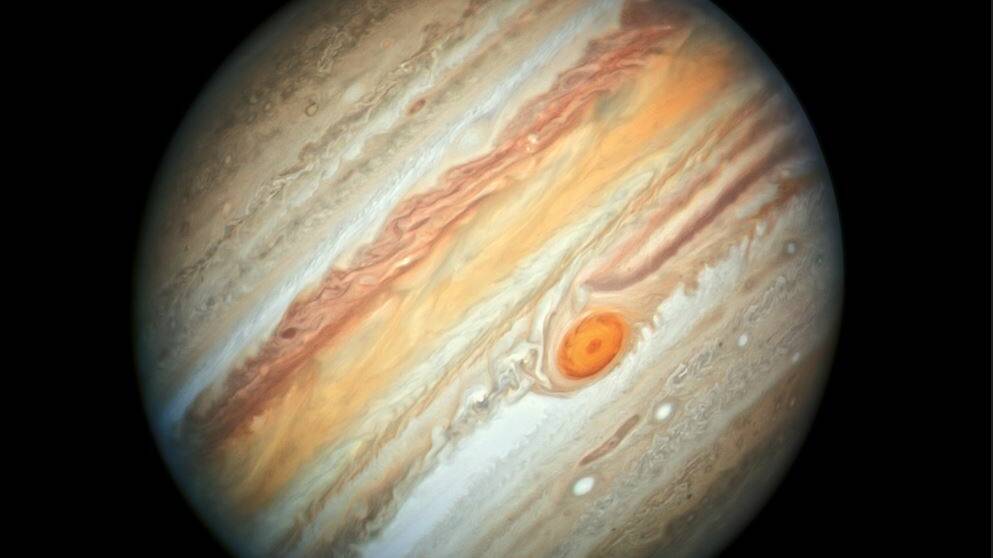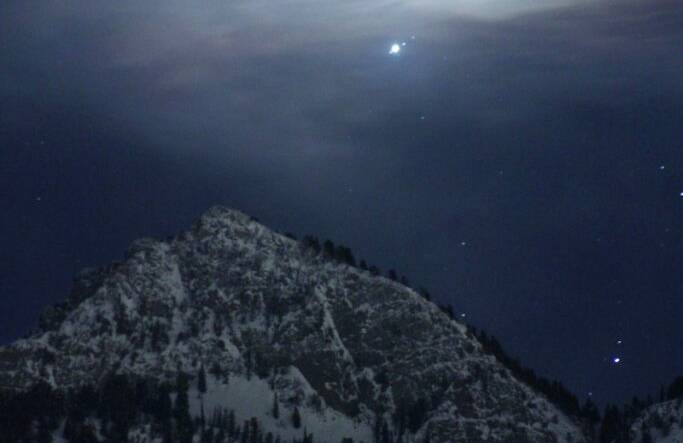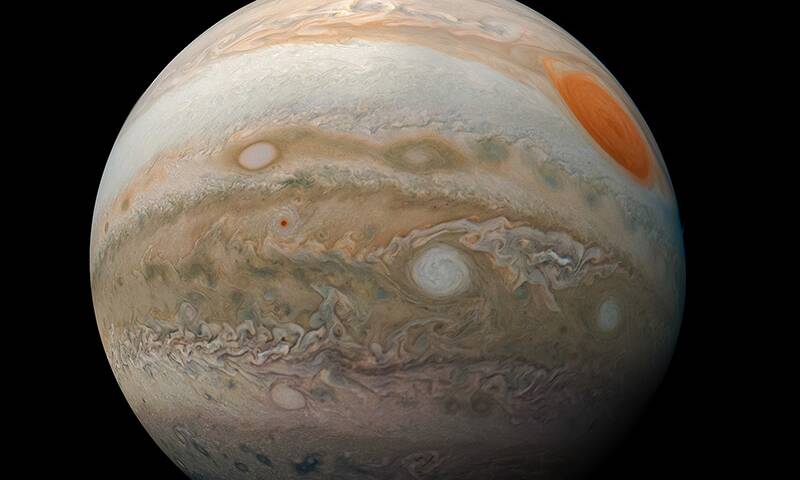The solar system's largest planet, Jupiter, will make its closest approach to Earth in 59 years on Monday.
Stargazers can expect excellent views of the gas giant, when it will appear unusually bright and large in the sky.
Not only will the planet be visible to the naked eye, so will four of its 80 moons.
Like the Earth, Jupiter doesn't orbit the sun in a perfect circle, meaning the planets pass each other at different distances during the year.
On Monday, at its closest approach, Jupiter will be approximately 591 million kilometres from Earth.

"This sounds a lot, but it's quite close," Adelaide Planetarium astronomy lecturer Paul Curnow said.
"Get your telescopes out, because Jupiter won't be this close again until October 7, 2129."
For those with a telescope, Jupiter's Great Red Spot and bands will be visible.
Get your telescopes out, because Jupiter won't be this close again until October 7, 2129.
- Adelaide Planetarium astronomy lecturer Paul Curnow
If you don't have a telescope, binoculars will also show you a great view.
If you don't have either, head outside just after sunset - a dark area with high elevation is best - and you'll be able to see it with your naked eyes.
"You'll see what appears to be a bright star after sunset, low on the horizon, rising in the east," Mr Curnow said.

"Sure it'll appear as a small white dot, but you should be able to pick up what appears to be four tiny stars near Jupiter, but they're actually the Galilean moons."
If you have buildings or trees in the way, you'll have to wait a few hours until Jupiter makes its way further up the night sky.
Monday's close approach by Jupiter also coincides with the giant planet reaching 'opposition'.
IN OTHER NEWS
From the viewpoint of Earth's surface, opposition happens when an astronomical object rises in the east as the Sun sets in the west, placing the object and the Sun on opposite sides of Earth. This occurs every 13 months.
The combined phenomena means this is a must-do for stargazers, Mr Curnow said.
The best day to see Jupiter is on Monday, September 26, but if you miss it the giant planet will still be visible for the next month.
To see exactly where Jupiter will be visit www.stellarium.org.
Doing its bit to protect the Earth
Jupiter is a large gas planet, made up of 90 per cent hydrogen, and its sheer size helps protects the Earth.
"When comets and asteroids get pulled in towards the sun often Jupiter intercepts that and often Jupiter gets struck," Mr Curnow said.
"From an evolutionary point of view we know that it's good for us.
"We know that fragments of a comet struck Jupiter in a big way in 1994, that was 'Comet Shoemaker-Levy 9'."
Ten things to know about Jupiter

The grandest planet
Eleven Earths could fit across Jupiter's equator. If Earth were the size of a grape, Jupiter would be the size of a basketball.
Fifth planet from our star
Jupiter orbits about 778 million kilometres or 5.2 Astronomical Units (AU) from our Sun (Earth is one AU from the Sun).
Short day/long year
Jupiter rotates once about every 10 hours (a Jovian day). It takes 4333 days (equivalent to almost 12 Earth years) to complete one orbit of the Sun (a Jovian year).
What's inside
Jupiter is a gas giant and so lacks an Earth-like surface. If it has a solid inner core at all, it's likely only about the size of Earth.
Massive world, light elements
Jupiter's atmosphere is made up mostly of hydrogen (H2) and helium (He).
Words galore
Jupiter has more than 75 moons.
Ringed world
In 1979 the Voyager mission discovered Jupiter's faint ring system. All four giant planets in our solar system have ring systems.
Exploring Jupiter
Nine spacecraft have visited Jupiter. Seven flew by and two have orbited the gas giant. Juno, the most recent, arrived at Jupiter in 2016.
Ingredients for life?
Jupiter cannot support life as we know it. But some of Jupiter's moons have oceans beneath their crusts that might support life.
Super storm
Jupiter's Great Red Spot is a gigantic storm that's about twice the size of Earth and has raged for over a century.


